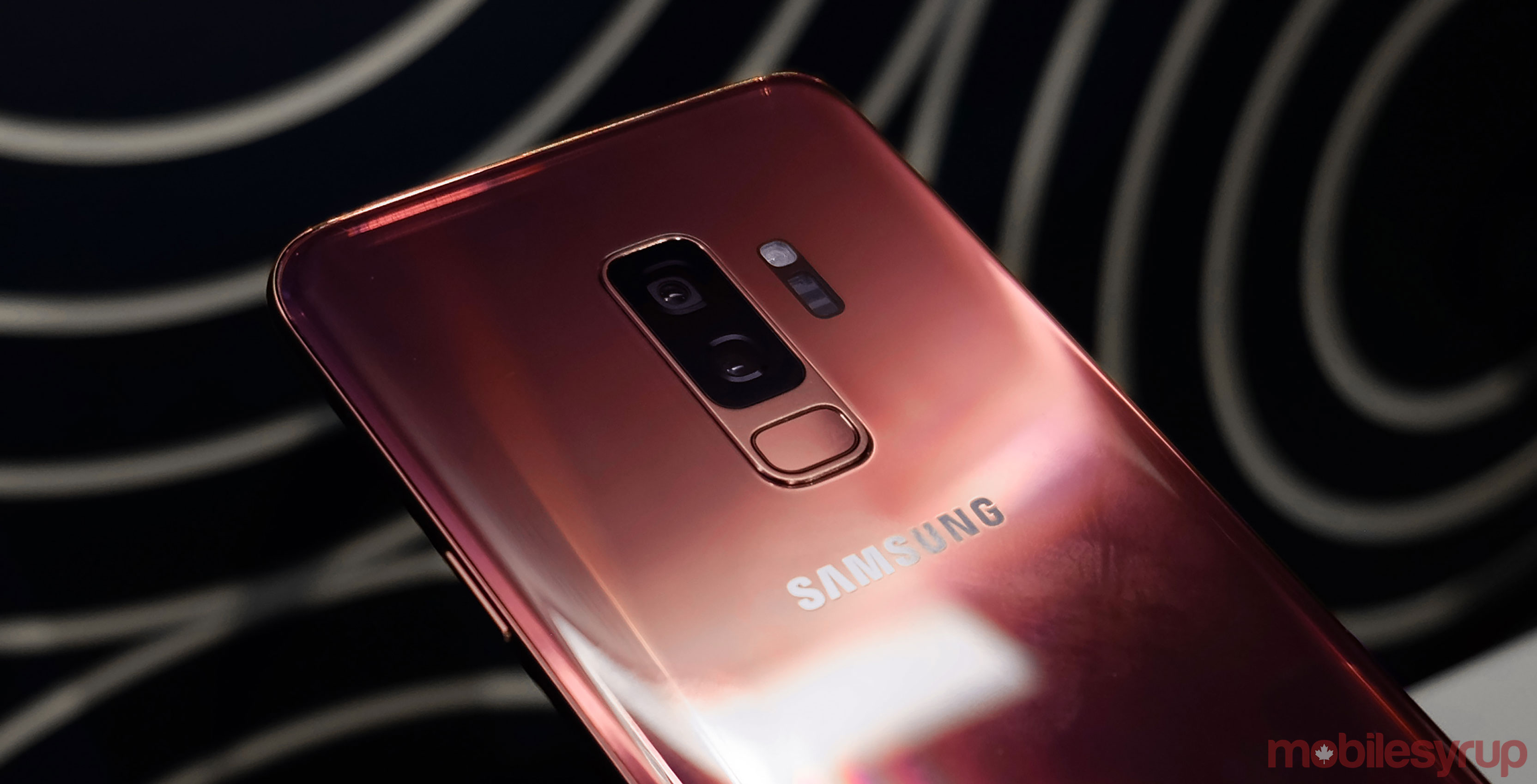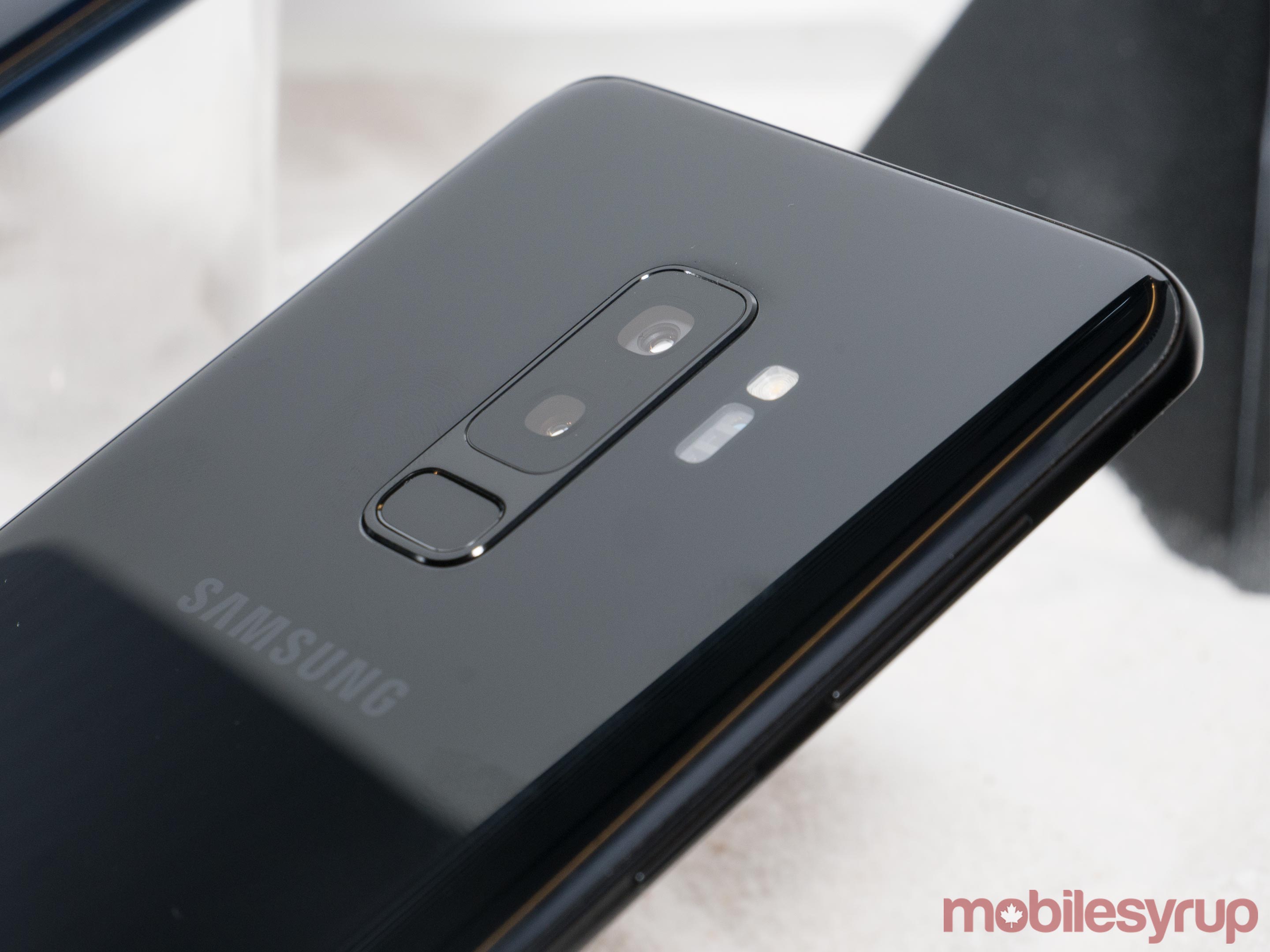
“The camera reimagined.”
That’s how Samsung is describing what it has done with the camera in the new Galaxy S9 and S9+ by adding new features and tweaking the interface.
The company’s marketing for the device appears to focus on letting users “express themselves,” intimating that smartphone cameras are about more than just capturing memories. It is stating the obvious, in my ways. From documenting something for reference or scanning codes and documents, it’s already second nature to many that these cameras are pretty versatile.

Except there’s supposed to be more than that here. Samsung has pushed to create a better camera with more consistent output. That approach remains the same, what with multiple aperture settings, super slow-motion video and more HDR-like results adding to an already effective shooter.
I checked it out in person in New York and gauge how the new features will work. For more on the other aspects of both devices, MobileSyrup’s Patrick O’Rourke has that covered.
Variable aperture
Somewhat surprisingly, Samsung has opted to only go dual-lens with the larger S9+. The second 2x optical telephoto lens, first introduced in the Galaxy Note 8, won’t be included in the smaller S9, unfortunately. Hard to really call that device ‘smaller’ when it has a 5.8-inch display, and no reason was given as to why the company omitted it.
Either way, the 12-megapixels sensor and main lens in both devices do the same things. The biggest difference is the variable aperture, which isn’t some software gimmick, but an actual mechanical shift in the size of the diaphragm light passes through in the lens.

The range is made up of two f-stops. The default is f/1.5, with the other option being f/2.4. Toggling between them is easy enough through the onscreen interface, and it applies to both Auto and Pro modes. The telephoto lens on the S9+ has a static f/2.4 aperture.
Samsung claims the wider f/1.5 aperture captures 28 percent more light than the Galaxy S8 could, which had a f/1.7 aperture. The Dual Pixel Sensor is also said to reduce noise by 30 percent. Without testing this in a variety of shooting conditions, it’s hard to verify numbers like that, but the initial results I noticed were promising.
Curiously, it appears the variable aperture will have a negligible impact on Live Focus, the adjustable depth of field feature Samsung introduced in the Galaxy Note 8. Wider apertures tend to help create more depth of field, blurring backgrounds more dramatically. Since Live Focus already allows you to adjust that after taking the shot, the aperture might be redundant.

I’m not so sure. Live Focus, while very cool, is still mostly software rendering at work using the two lenses. That’s why the Galaxy S9 won’t offer the feature. On that phone, you would have to use the Selective Focus feature instead, which is entirely software-based.
Even so, the immediate advantage I saw with the variable aperture was in Pro mode. Toggling between the range helped merely less on adjusting shutter speed and ISO, though having an aperture as wide as f/1.5 will certainly contribute to using higher shutters and lower ISOs to avoid blurry shots.
Super Slow-Mo
Video hasn’t made the same full strides on Samsung’s cameras the way still photos have, but there’s an attempt to close that gap with these two devices.
Chief among these is the Super Slow-Mo mode that captures 0.2 seconds of real-time footage and raises the framerate to 960fps to create a six-second slow-motion sequence as part of a slow-mo video. It applies to both the S9 and S9+, so is not exclusive to either handset.
It’s a neat way to dramatize almost any movement, but Samsung isn’t the first to try it. Sony included a mode just like it in the Xperia XZ1 and XZ1 Compact. In that case, Sony made the process entirely manual, meaning you had to push the super slow-motion button just before the moment you wanted to capture.
Samsung is attempting to try automating it in some way. With manual, you have to capture the clip on your own by tapping the record button. In auto, the mode automatically records at 960fps when the subject enters the focus area onscreen. You know it should work when the box turns yellow.
I’ll reserve judgment until I can truly test it out, but playing around with it, I can say that auto will come with a learning curve. First, distance matters because a notification will indicate when you need to move to get further away. Second, lighting and focus will undoubtedly factor in. The mode sticks to the wider f/1.5 aperture, but there’s no way to adjust shutter or ISO, so I’m not sure how good this mode will be in more challenging lighting situations.
You can add music to the clip and share it right away on social media. Samsung includes a number of music selections, and I confirmed that you can add your own. They would have to be music files, like MP3s, stored on your phone, as there is no integration with streaming services like Spotify or Google Play Music.
Newer interface
Samsung also decided to rework the interface to make it easier to switch modes. Swipe left or right to toggle through them or select from the menu bar at the top of the screen. I found that its placement can be problematic when shooting in landscape mode, as I accidentally switched modes a few times.
Still, switching between Auto, Pro and Live Focus modes was super easy, and better suited to shooting on the fly. What is available hasn’t changed from the S8 or Note 8, just in how it’s all laid out for you.
The Pro mode’s interface is essentially the same, save for the aperture’s inclusion. The sliders were a little sensitive, but once I get to test it out, I’ll see if it really is any different.
Bixby is back
In this age of voice assistants, Bixby is in tough, but the focus here is on the platform’s camera features. The problem is that not everything possible in other markets applies in Canada. My experience with Bixby Vision has been less than impressive, and while Samsung talks a big game with it, I’ll have to see some progress with these two phones to reassess.
But they are trying. The ability for women to try on different makeup products, including colours and styles through the front-facing camera, looked interesting.
Sephora is the retail partner, and the idea is that once you find what you’re looking for, you can order it directly.
Food will also be part of the newer features, where shooting food with Bixby Vision will try to approximate how many calories a dish has. I saw this at work at Samsung’s booth at CES, which was really interesting, but I’m skeptical of the accuracy involved. We’ll have to see how it evolves.
Taking shots
Interestingly, Samsung said next to nothing about the telephoto lens on the S9+. I suspect the reason why is because it doesn’t do anything different from what we saw in the Note 8.
Instead, the focus was on creating and sharing content, like the AR Emojis the company will push hard. For a brand known to be gimmicky in the past, features like the AR Emojis and Bixby Vision may feel more fleeting to mobile photographers who will get more out of the mechanical aperture.
The cameras on both phones were already going to be good because of the foundation already set for them. But in the presence of stiff competition from other phone manufacturers, it will be intriguing to see how well these cameras stand up in every shooting scenario.
MobileSyrup may earn a commission from purchases made via our links, which helps fund the journalism we provide free on our website. These links do not influence our editorial content. Support us here.




